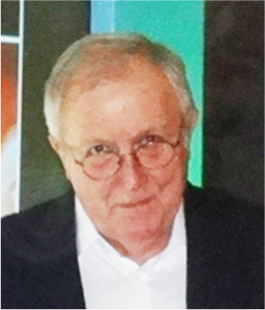Article

Readers will, hopefully, recall that last issue's Comment was a rallying call to the funders of NHS dentistry in England and Wales to consider a method of payment whereby clinicians would feel that the payments which they would receive, would reflect the time which they spent on treating worn anterior teeth using adhesive resin composite restorations placed at an increased occlusal vertical dimension (OVD). In an effort to kickstart this process, I have sent my Comment to the Chief Dental Officers of England and Wales, Drs Sara Hurley and Colette Bridgman, even though I am aware that, in the current pandemic, they have other matters to occupy their minds. Hopefully, they might take note of the situation in Scotland where additional fees are available for treatment of tooth wear (TW), but, alas, I am not ‘holding my breath’!
For the first time that I can recall, there is now a substantial volume of research being published on TW, in particular from teams at King's College London (with Dr Shamir Mehta being prevalent there) and the Radboud University Nijmegen in the Netherlands. This, perhaps, reflects the increasing incidence of the problem. I will therefore summarize several recent relevant papers for you.
Dr Mehta and colleagues investigated the impact of TW on the oral health quality of life in patients in the UK, Malta and Australia.1 They used BEWE assessments to inform the state of 319 patients and compared that with results from a shortened version of a previously validated questionnaire (OHIP-26) designed to measure oral health-related quality of life. The results indicated ‘a significant association’ between increasing BEWE and an overall higher score for OHIP-26. This association was particularly notable in the sections on functional limitation, physical discomfort, physical disability and psychological disability. In short, therefore, TW needs to be treated, rather than watched, as higher levels of TW are associated with deteriorating oral health-related quality of life.
So, does treating TW have an impact on the patient? Kalaykova and co-workers2 assessed masticatory performance in 23 adult patients who received direct composite restorations on worn teeth at an increased OVD. They used what was called a ‘comminution test’ that assessed how well the patients chewed artificial test food, made from dental impression material (nice!), after 20 chewing cycles. The size of the chewed food particles was measured and the test was performed before treatment, and repeated 1 month after treatment. Interestingly, there was no difference in the size of the food particles pre- and post-treatment (perhaps unsurprising given that the chewing substrate was impression material!) However, in my view, the assessment time of 1 month was perhaps insufficient to allow patients to adapt to their new occlusal arrangement, given that the literature tells us that it may take a mean of 7 months for the posterior occlusion to re-establish and, in one case, 18 months.3 On the other hand, a different measurement, by way of five questions from an oral health-related quality of life questionnaire, showed that the patients' self-reported ability to eat and chew had improved significantly, ie the treatment was efficacious.
A recent prospective study from Nijmegen4 examined the full rehabilitation of 34 patients, who, between them, received a massive total of 1256 additive composite restorations (687 in anterior teeth, 324 in premolars, 245 in molars) at a mean increase in OVD of 1.3±0.8 mm. During the 3.5 years of the study, there were 69 failures, of which 61 were repaired and classified as survived, this comprising an overall success of 94.8% and a survival rate of 99.3%. Annual failure rate was 1.1% for the anterior composite restorations, 1.9% and 2.9%, respectively, for the restorations in premolars and molars. The conclusion was loud and clear – full rehabilitation with direct composite restorations is a valid treatment for patients with severe tooth wear.
Last, is there an association between erosive TW and gastro-oesophageal reflux disorder (GERD)-related symptoms? Readers will have asked patients the question: ‘are you ever aware of stomach acid coming up into the back of your mouth’? A recent systematic review5 from a team of researchers in Northern Ireland provides information on this. The researchers identified 457 articles on the subject and narrowed this down to 27 for their review. The results were clear, namely, that individuals with GERD are at two-to four-times greater odds of presenting with erosive TW when compared with controls without GERD. However, there are more serious implications for general dentists who have asked the above question on spotting erosive TW. GERD is a potential risk factor for, most commonly, reflux oesophagitis, but also oesophageal adenocarcinoma.6 So, referral to the patient's general medical practitioner is paramount in order that the patient be assessed for such a serious condition, alongside prescription of appropriate medication for the patient's GERD symptoms.
There is a lot of TW out there that needs treating!7 Hopefully, we will find a way to do that economically within the NHS. The authors of the prospective evaluation from Nijmegen4 mention, almost in passing, that treatment of severe tooth wear in the Netherlands is reimbursed by the public health insurance. Wouldn't it be great if it were thus here. In that regard, I am not alone in considering that the UDA payment system in England is inappropriate (Dr Bridgman has kindly advised me that it is no longer used in Wales). I therefore draw readers' attention to the superb Guest Editorial by Martin Kelleher, surely one of dentistry's greatest free thinkers and writers, and one of the pioneers in what is now the accepted additive treatment of worn teeth. I hope that you enjoy it.
PS Having just read the article by Hamilton et al, I am going on a very strict diet!

